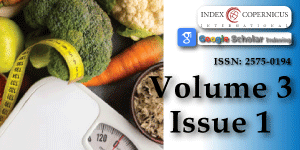Possible links between consumption of A1 “like” milk And Type 1 Diabetes (T1D)
Main Article Content
Abstract
During the last three decades, there has been an interesting debate on the intake of A1 ‘like” milk and incidence of type 1 diabetes (T1D) in genetically predisposed individuals. The epidemiological, ecological and case-control studies have concrete pieces of evidences in favor of the hypothesis that is further supported by animal trials in mice and rat and in vitro trials on cell lines. But on the other hand, European Food Safety Authority reported that there isn’t sufficient data to draw a final recommendation at this stage in terms of contradictory results, lack of cause-effect relationship and being a mere suggestive evidence [1]. However, the report itself states that these studies are strong enough to formulate a concrete hypothesis and further research is needed to confirm the same. Keeping in view the published data in favor of the hypothesis and the counter-arguments, it is suggested that further research with well-designed animal and in vitro trials with intact proteins and peptides is needed to fully confirm the hypothesis. Until the issue is fully resolved, it’s the personal choice of the individuals at risk to T1D (genetically predisposed) to either remove A1 “like” or increase the A2 “like” milk from their diet.
Article Details
Copyright (c) 2019 Ul Haq MR, et al.

This work is licensed under a Creative Commons Attribution 4.0 International License.
EFSA, European Food Safety Authority. Review of the potential health impact of β-casomorphins and related peptides. Scientific Report n. 231. 2009; 1–107. Ref.: http://bit.ly/2X7wxL3
Atkinson MA, Eisenbarth GS. Type 1 diabetes: New perspectives on disease pathogenesis and treatment. Lancet. 2001; 358: 221–229. Ref.: http://bit.ly/2Ygd7A9
Bluestone JA, Herold K, Eisenbarth G. Genetics, pathogenesis and clinical interventions in type 1 diabetes. Nature. 2010; 464: 1293–1300. Ref.: http://bit.ly/2LqbFrd
Todd JA. A protective role of the environment in the development of type 1 diabetes? Diabetic Medicine.1991; 8: 906–910. Ref.: http://bit.ly/2IScqaV
Todd JA. Etiology of type 1 diabetes. Immunity. 2010; 32: 457–467. Ref.: http://bit.ly/2XbnqJo
Chia JSJ, McRae JL, Kukuljan S, Woodford K, Elliott RB, et al. A1 beta-casein milk protein and other environmental pre-disposing factors for type 1 diabetes. Nutrition & Diabetes. 2017; 15; 7:e274. Ref.: http://bit.ly/2LmKPAb
Knip M, Veijola R, Virtanen SM, Hyöty H, Vaarala O, et al. Environmental triggers and determinants of type 1 diabetes. Diabetes. 2005; 54: S125–S136. Ref.: http://bit.ly/2xf9ajp
Coppieters KT, von Herrath MG. Histopathology of type 1 diabetes: old paradigms and new insights. Rev Diabet Stud. 2009; 6: 85-96. Ref.: http://bit.ly/2FxYr7V
Scott FW. Cow milk and insulin-dependent diabetes mellitus: Is there a relationship? Am J Clin Nutr. 1990; 51: 489–491. Ref.: http://bit.ly/2xbKjwP
Elliott RB, Harris DP, Hill JP, Bibby NJ, et al. Type I (insulin-dependent) diabetes mellitus and cow milk: casein variant consumption. Diabetologia. 1999; 42; 292-296. Ref.: http://bit.ly/2RGI1iz
Thorsdottir I, Birgisdottir BE, Johannsdottir IM, Harris DP, Hill J, et al. Different β-casein fractions in Icelandic versus Scandinavian cow's milk may influence diabetogenicity of cow's milk in infancy and explain low incidence of insulin-dependent diabetes mellitus in Iceland. Pediatrics. 2000; 106: 719-724. Ref.: http://bit.ly/2X12Cz7
Birgisdottir BE, Hill JP, Harris DP, Thorsdottir I. Variation in consumption of cow milk proteins and lower incidence of Type 1 diabetes in Iceland vs the other 4 Nordic countries. Diabetes Nutr Metab. 2002; 15: 240-245. Ref.: http://bit.ly/2XcMQWX
McLachlan CNS. Breeding and milking cows for milk free of β-casein A1. A2 Corporation, US 7863002B2. 2001. Ref.: http://bit.ly/2X9VXrx
Laugesen M, Elliott R. Ischaemic heart disease, type 1 diabetes, and cow milk A1 ß-casein. N Z Med J. 2003; 116: 121-132. Ref.: http://bit.ly/2RBxpSd
Elliot RT, Martin JM. Dietary protein: A trigger of insulin dependent diabetes in BB rat. Diabetologia. 1984; 26: 297-299. Ref.: http://bit.ly/2XuSGCo
Elliot RB, Hill RJ. Method of selecting non-diabetogenic milk or milk products and milk or milk products so selected. A2 Corporation. 1995; CA2204245: PCT/NZ1995/000114.
Elliott RB, Wasmuth H, Hill J. Immunosuppressing effects of cow milk β-casomorphins in prediabetic mice and humans. 16th IDF Congress, Helsinki. 1997.
Yin H, Miao J, Zhang Y. Protective effect of β-casomorphin-7 on type 1 diabetes rats induced with streptozotocin. Peptides. 2010; 31: 1725–1729. Ref.: http://bit.ly/2Xe6YrB
Yin H, Miao J, Ma C, Sun G, Zhang Y. β-casomorphin-7 cause decreasing in oxidative stress and inhibiting NF-κB-iNOS-NO signal pathway in pancreas of diabetes rats. J Food Sci. 2012; 77: C278-282. Ref.: http://bit.ly/2IP5CuK
Cavallo MG, Monetini L, Walker B, Thorpe R, Pozzilli P. Diabetes and cow’s milk. Lancet. 1996; 348: 1655.
Padberg S, Schumm-Draeger PM. "Significance of A1 and A2 antibodies against β-casein in insulin-dependent diabetes mellitus". Deutsche Medizinische Wochenschrift. 1999; 124: 1518-1521. Ref.: http://bit.ly/2LhpCYy
Monetini L, Barone F, Stefanini L, Petrone A, Walk T, et al. Establishment of T cell lines to bovine β-casein and β-casein-derived epitopes in patients with type 1 diabetes. J Endocrinol. 2003; 176: 143-150. Ref.: http://bit.ly/2ZU6IL9
Banchuina N, Boonyasrisawata W, Vannasaengb S, DharakulaPa-thai T, Chaicharn Deerochanawongd Y, et al. Cell-mediated immune responses to GAD and β-casein in type 1 diabetes mellitus in Thailand. Diabetes Res Clin Pract. 2002; 55: 237-245. Ref.: http://bit.ly/2ZQUiUo
Elliott RB, Wasmuth H, Hill J. Immunosuppressing effects of cow milk β-casomorphins in prediabetic mice and humans. 16th IDF Congress, Helsinki. 1997.
Ul Haq MR, Kapila R, Saliganti V. Consumption of β-casomorphins-7/5 induce inflammatory immune response in mice gut through Th2 pathway. J Functional Foods. 2014a; 8: 150–160. Ref.: http://bit.ly/2RDb1HX
Ul Haq MR, Kapila R, Sharma R, Saliganti V, Kapila S. Comparative evaluation of cow β-casein variants (A1/A2) consumption on Th2-mediated inflammatory response in mouse gut. Eur J Nutr. 2014b; 53: 1039–1049. Ref.: http://bit.ly/2JcUkze
Harrison LC, Honeyman MC. Cow’s milk and type 1 diabetes: The real debate is about mucosal immune function. Diabetes. 1999; 48: 1501–1507. Ref.: http://bit.ly/2NhiH43
Crawford RA, Boland MJ, Hill JP. Changes over time in the association between deaths due to ischaemic heart disease and some main food types. Australian Journal of Dairy Technology. 2003; 58: 183. Ref.: http://bit.ly/2X4ubri





